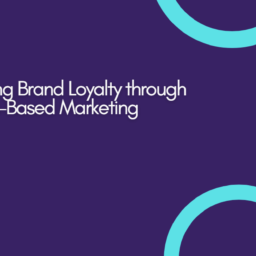In today’s digital age, building a personal brand online is not just for influencers and celebrities—it’s essential for anyone looking to stand out in their field, whether you’re an entrepreneur, a freelancer, or a professional climbing the corporate ladder. Your personal brand is your reputation, your calling card, and often the first impression you make. Here’s your ultimate guide to building a strong personal brand online, complete with tips and tools to get you started.
1. Understand Your Personal Brand
Before you start building your brand, it’s crucial to understand what a personal brand is. Essentially, it’s the combination of how you present yourself and how others perceive you. It includes your values, expertise, and the unique traits that set you apart. Start by asking yourself these questions:
- What are your core values? These are the principles that guide your actions and decisions.
- What are your passions and expertise? Identify the topics you are passionate about and have expertise in.
- What makes you unique? Consider what differentiates you from others in your field.
Knowing the answers to these questions will help you craft a brand that is authentic and consistent.
2. Define Your Audience
Understanding your audience is as important as understanding yourself. Your personal brand should speak directly to the people you want to influence or attract. Are you targeting potential clients, employers, or collaborators? Knowing your audience helps tailor your message and choose the right platforms to reach them.
3. Develop a Strong Online Presence
Your online presence is the foundation of your personal brand. Here are the key elements you need:
- Website/Blog: Your website is your digital home. It should include a professional bio, a portfolio of your work, and a blog where you share your expertise. Tools like WordPress, Wix, or Squarespace make it easy to create a polished website without coding skills.
- Social Media: Choose the social media platforms that best suit your brand and audience. LinkedIn is essential for professionals, Instagram is great for visual brands, and Twitter is ideal for thought leaders. Use each platform strategically, and maintain a consistent voice and style across all channels.
- Content Creation: Regularly create and share content that showcases your expertise and provides value to your audience. This could be blog posts, videos, podcasts, or infographics. Tools like Canva for design, Grammarly for editing, and Buffer or Hootsuite for scheduling posts can help streamline the content creation process.
4. Be Authentic and Consistent
Authenticity is key to building trust with your audience. Be yourself, and let your personality shine through your content. Consistency, on the other hand, is about maintaining a regular presence online and staying true to your brand message. This means regularly updating your website, posting on social media, and engaging with your audience.
5. Engage with Your Audience
Building a personal brand isn’t just about broadcasting your message—it’s also about interacting with others. Respond to comments, join discussions, and engage with other content creators in your niche. Tools like Twitter Chats, LinkedIn groups, or even Reddit can help you find and participate in relevant conversations.
6. Network Strategically
Networking is a critical part of building your brand. Attend virtual events, webinars, and online conferences in your industry. Platforms like LinkedIn are excellent for connecting with industry leaders and peers. Don’t just network for the sake of it—build genuine relationships that can lead to collaborations, partnerships, or new opportunities.
7. Monitor Your Online Reputation
Your online reputation is an essential aspect of your personal brand. Regularly Google yourself to see what comes up. Tools like Google Alerts can notify you when your name is mentioned online. Also, manage your privacy settings on social media to control what personal information is available to the public.
8. Evolve and Adapt
Finally, remember that your personal brand is not static—it evolves over time. As you grow in your career, your brand should grow with you. Stay updated with trends in your industry, learn new skills, and adapt your brand to reflect your development.
Essential Tools for Building a Personal Brand
- WordPress/Wix/Squarespace: For creating your personal website.
- Canva: For designing social media graphics, infographics, and other visual content.
- Grammarly: For editing and improving your writing.
- Buffer/Hootsuite: For scheduling and managing social media posts.
- Google Alerts: For monitoring your online reputation.
- LinkedIn: For professional networking and building industry connections.
- Mailchimp/Substack: For email marketing and building a subscriber list.
Conclusion
Building a personal brand online is an ongoing process that requires time, effort, and a clear strategy. By understanding your unique strengths, knowing your audience, and leveraging the right tools, you can create a personal brand that not only stands out but also resonates with the people who matter most to your career or business.
Remember, your personal brand is a reflection of who you are and what you stand for—make it count.




